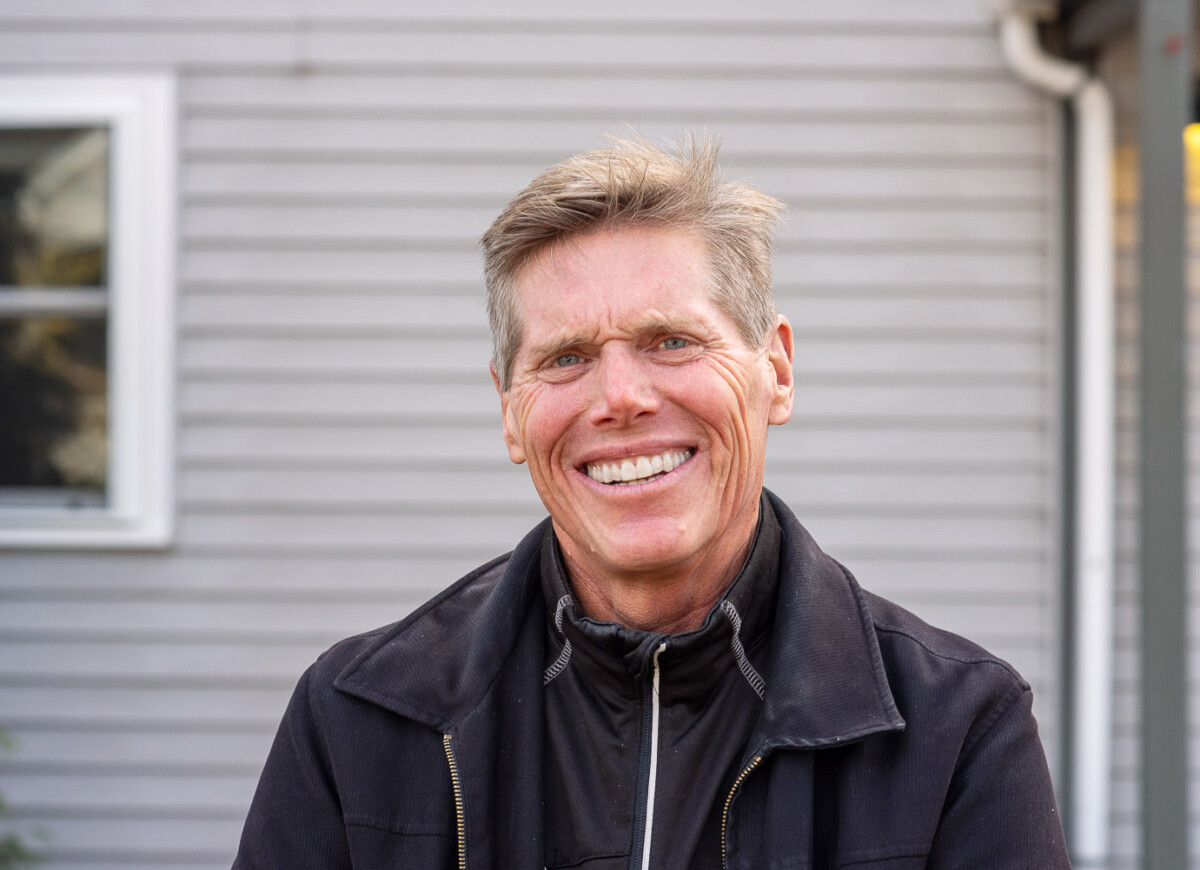‘Suddenly, I Felt Hopeful’

When Brian French heard the word “cancer,” his mind spiraled.
“That is a tough diagnosis to hear. Even though the doctor said it was likely treatable, it really dropped me to my knees,” says French, a local real estate agent from Chittenden County. “In that moment, your mind goes to the worst place … all you’re looking for is hope.”
A PET scan looked like hope to French. PET scans are tests that use a special type of camera and a radioactive tracer to look at organs in the body for signs of cancer or other problems. In French’s case, the scan would tell him whether the cancer in his throat was spreading to other parts of his body – critical information to inform his treatment plan for the coming months.
The task of finding the next available PET scan rested with Brent Devenney. As a nurse navigator with The University of Vermont Medical Center oncology department, Devenney helps patients like French to navigate the collection of tests, doctors’ visits and treatments that follow a cancer diagnosis.
With no availability of our own, I was calling hospitals hours away in the hope we could get Brian a PET scan quickly. I knew the wait was really stressful for him. Thankfully, we got a break – an appointment for a scan at the UVM Medical Center opened up that coming weekend.
Brent Devenney
The newfound opening was no coincidence. It was the product of a six-month-long effort by providers and administrators to shrink the wait times for PET scans and other key radiological tests.
Reducing Wait Times for Radiology Scans
Every year, approximately 100,000 patients undergo radiological tests like MRIs, PET and CT scans across the UVM Health Network. They are an essential diagnostic tool, and their use is growing; technological advances mean that PET scans are more effective now at detecting cancers or irregularities of all kinds. And the growing number of treatment options means that people with cancer are living longer than ever before. Together, this adds up to more people getting diagnostic scans of various kinds.
Devenney says that scheduling such tests in a timely manner had grown more challenging over the past year as the health system saw more people needing care after delaying appointments during the course of the pandemic.
Radiology providers, technologists and staff had grown frustrated as well. “If it were me, or one of my family members, I wouldn’t want to wait that long for something as serious as cancer,” says Ryan Bouillion, a senior nuclear medicine technologist who performs PET scans at the UVM Medical Center.
It was sentiments like these that prompted a multidisciplinary team from the UVM Health Network to get together with a clear goal: figure out how to get patients in for scans more quickly. The answer? Extend radiology clinic hours to include evenings and weekends, and purchase an additional MRI machine.
These efforts cut wait times by more than half for MRIs – from two months to about three weeks. Wait times for PET and CT scans are also falling, even amidst rising demand. And now, each week, the Radiology department sends out information about the wait times at all clinics across the UVM Health Network, so providers can refer to other locations if they want to get their patients in sooner. Altogether, the program has served more than 2,000 patients across Vermont and northern New York.
Mental and Emotional Relief
One week into his cancer diagnosis, that sense of clarity was exactly what Brian French was looking for. The scan revealed that the cancer was localized to a small lump in his throat. It hadn’t spread to other areas of his body.
That PET scan was such a mental and emotional relief. Getting that scan quickly meant that I could work with my doctors to come up with a game plan for treatment. Suddenly, I felt hopeful.
Brian French
